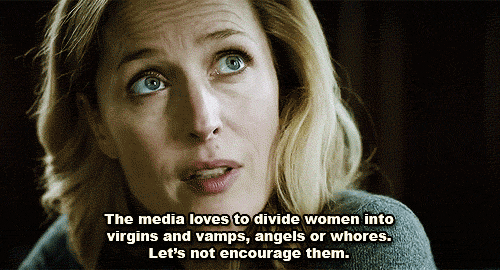The class on Thursday made me think of another episode of How I Met Your Mother where Barney reaches his 200th girl he has had sex with.
The reason why he does that can be traced back to his middle school years when
a boy in his school lied to have had sex with 100 girls. Barney’s friends all
express their feelings of how disgusting having sex with 200 girls is because
certainly two hundred is too many. Even the boy in his middle school, who is a
man with wife and kids now, thinks he is gross and suggests him to counsel for
sex addiction, but Barney still thinks himself as awesome.
From this media content we can see that, although teenagers tend to connect sex with their social status, the so-called grownups are expected to have some sense in terms of how much people they should have sex with. Two hundred is too many, even for Barney, who is represented as a playboy. However, unlike the clip we saw in class, where it clearly states that 4 sex partners is not enough and 19 is too many, there is no statement of what is the “appropriate” number of girls a guy should have sex with. In other words, the show did not make a clear statement about what people should behave in terms of having sexual partners.
From this media content we can see that, although teenagers tend to connect sex with their social status, the so-called grownups are expected to have some sense in terms of how much people they should have sex with. Two hundred is too many, even for Barney, who is represented as a playboy. However, unlike the clip we saw in class, where it clearly states that 4 sex partners is not enough and 19 is too many, there is no statement of what is the “appropriate” number of girls a guy should have sex with. In other words, the show did not make a clear statement about what people should behave in terms of having sexual partners.
In HIMYM it does state clear that how nice it is for Marshall and Lily to only have sex with each other. On the other hand, being an “awful and gross human being”, Barney ends up pretty well too. In fact, he actually has a fairly successful life, with a bunch of best friends, a healthy body and good look, and a job that nobody knows what it is but somehow pays extremely well. He barely gets into any serious problem in the show. Will this portrait of Barney affect how the audiences of HIMYM perceive sex? According to Chia and Gunther, the hypothesis, which is based on the cultivation effect, that “Among college students, higher levels of media consumption will be associated with perceptions of more permissive peer norms about sex” is not supported by empirical data (311). However, does cultivation effect really not influence people’s sex attitude towards others at all? I found another clip summarizing all the sex partners Barney has in the show HIMYM, and it is nearly 200 as well. I specifically looked into the comment section to see how people react to this.
https://www.youtube.com/watch?v=3htVoHJm7OM
Most of the people in the comment section took Barney’s behavior as norms by not challenging the actual content but keeping discussing the counting mistakes in the video. Of course I did not go through all the comments, but within those I saw, nobody thought Barney hooking up with nearly 200 girls is inappropriate or disgusting, although two comments did mention or question the STD problem he might be having. There are also people showing “respect” to Barney and “love him.” The comments indicate that people potentially give Barney permission to do that. In other words, they become “more permissive of sexual attitudes of peers,” which coordinates with the hypothesis raised in the Chia and Gunther article. In my opinion, Barney is a loveable character. Even when he is picking up girls he seems pretty hilarious. But it is probably his funny characteristics that have kept the audiences from really thinking through. When the audiences watch Barney hitting on different girls, they might pay too much attention on how funny it is and ignore the fact that it would be really “disgusting” if someone actually sleeps with all of them. They may bring this kind of perspective into real life and therefore, form the cultivation effect. It does not matter how “awful” one is sexually, as long as he is as funny and cute as Barney, he can get away with it.
Here is another clip showing what Barney’s moves would look like in real life:
Reference
Stella C. Chia and Albert C. Gunther (2006) How Media Contribute to Misperceptions of Social Norms About Sex. Mass Communication & Society, 2006, 9(3), 301-320









